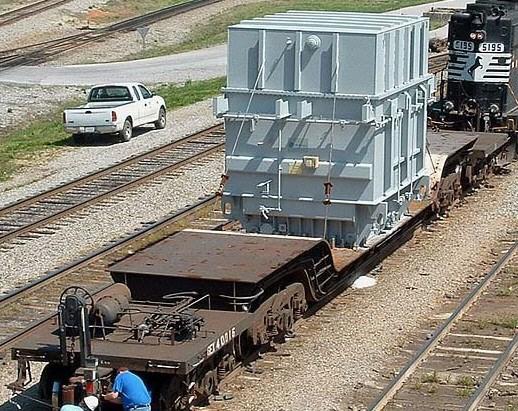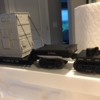O Scale Model of an 8-Axle heavy duty depressed center flatcar
This model is very similar to the prototype CCRX 40016 which is a 12-axle depressed center flatcar. The load platform length is 30 feet. The prototype depressed center flat car is now owned by Contractors Cargo Company, Houston, Texas. It was originally built for General Electric, by Maxson. The prototype has a capacity of 640,000 lbs.

This model has been adapted as an 8-axle model. The overall length of the model is 24 inches. The O scale model shown uses MTH 2-axle Rollerbearing style trucks. The use of unique "articulated" bolsters allows use of the model on O-54 scale 3-rail trackage and turnouts. The model also has a very low center of gravity which provides good tracking capability. Track clearance for this model as shown is 1/8 inch or 6 scale inches above rail. This track clearance dimension can be easily adjusted as necessary on the model by adding shims to the bolsters.
Note: The O scale model has been painted to represent a new or recently refurbished flatcar. No attempt was made to reproduce all details of the prototype since the model is intended for O scale operation and not a display model.








